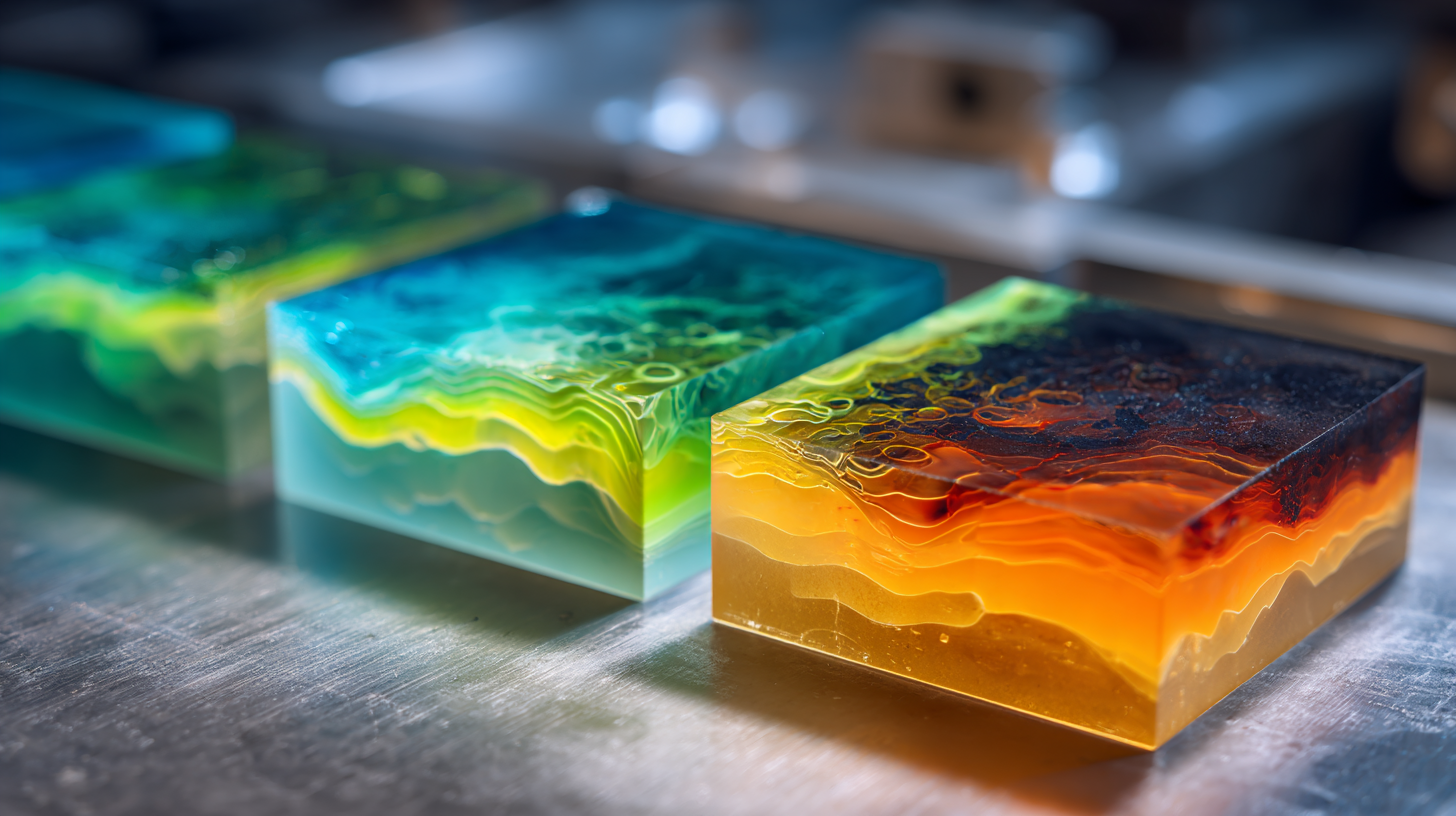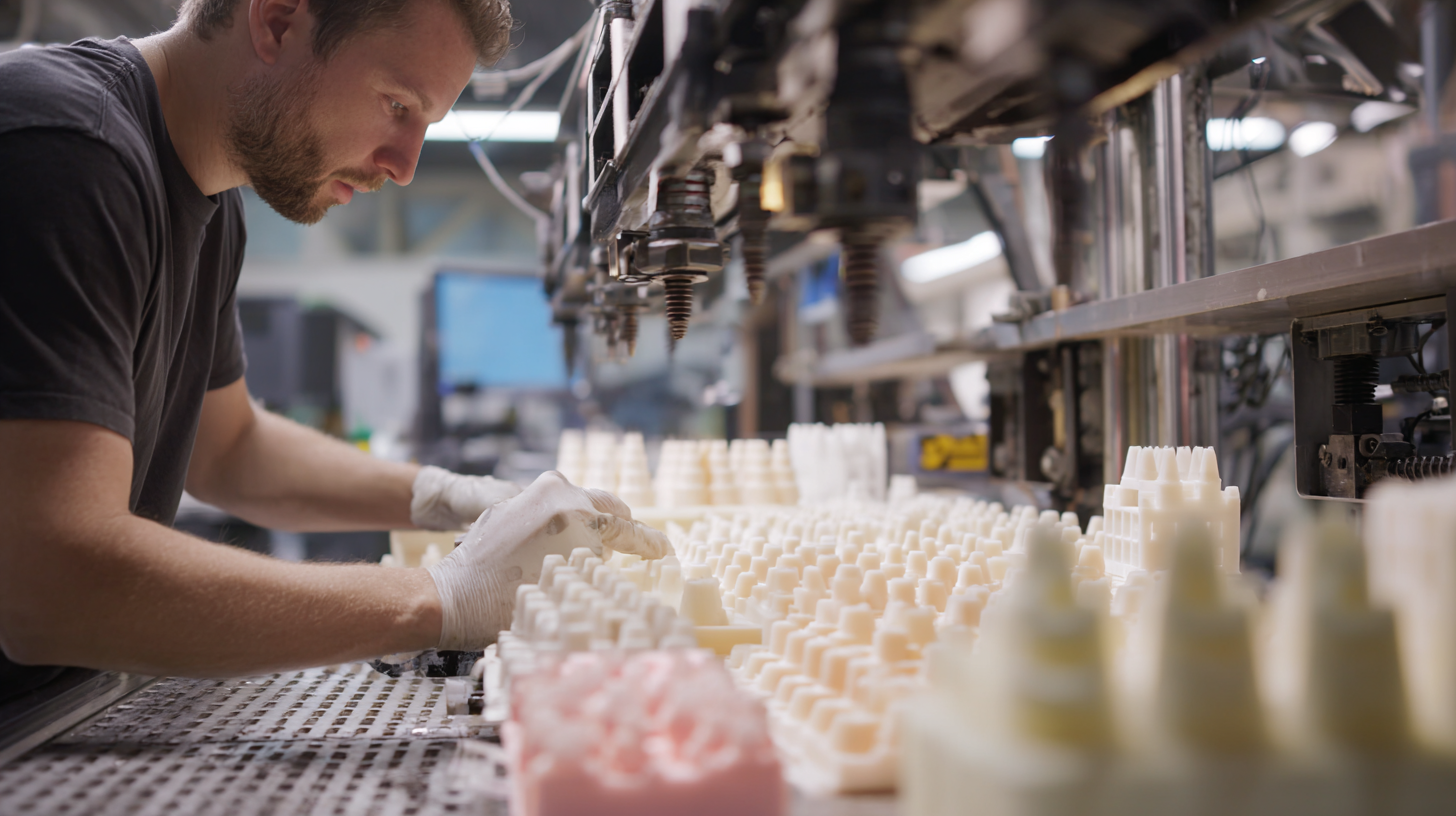Exploring Unique Product Characteristics and Applications Using Best Molding Technology Insights
Table of Contents
- Understanding the Importance of Material Selection in Molding Technology
- Evaluating Manufacturer Quality Based on Industry Standards and Certifications
- Assessing the Role of Advanced Molding Techniques in Enhancing Product Features
- Identifying Key Metrics for Analyzing Manufacturer Performance and Reliability
- Case Studies: Successful Molding Applications Leveraging Superior Manufacturing Partners
- Future Trends in Molding Technology: Innovations Driving Product Evolution in Various Sectors
- FAQS
- Related Posts
In the ever-evolving landscape of the feed processing and aquaculture industries, 2025 is poised to witness significant advancements driven by Molding Technology. As reported by industry experts, the global feed machinery market is expected to grow at a CAGR of 4.5%, reaching USD 36 billion by 2025, highlighting the increasing demand for efficient production systems.

Shanghai Zhengyi Machinery Engineering Technology Manufacturing Co., Ltd. (CPSHZY), with over 25 years of expertise in manufacturing feed processing machineries and large-scale production of pellet mill dies, stands at the forefront of this transformation. By leveraging cutting-edge molding technology, CPSHZY not only enhances product characteristics and applications but also addresses the pressing need for environmental protection solutions in feed plants and aquaculture farms.
As we delve into the unique attributes and applications of these technologies, we will explore how CPSHZY's innovations are shaping the future of the industry.
Understanding the Importance of Material Selection in Molding Technology
The significance of material selection in molding technology cannot be overstated. Choosing the right material not only affects the final product's performance and durability but also influences production efficiency and costs. According to a recent report from the Plastics Industry Association, proper material selection can reduce production costs by up to 20% while enhancing product functionality. As manufacturers seek to improve their competitive edge, understanding the properties of various materials—such as thermoplastics, thermosetting plastics, and composites—can make a substantial difference in the outcome of the molding process.
**Tips:** When selecting materials, consider the end-use application, as well as factors such as thermal stability, chemical resistance, and mechanical strength. Engaging with material suppliers early in the design process can provide valuable insights that lead to better selection and ultimately, superior products.
Moreover, advancements in molding technologies have made material choices even more critical. Enhanced molding techniques, such as injection and blow molding, require specific material properties for optimal results. A study by the American Society of Plastics Engineers indicated that industry leaders who invest in advanced molding technologies can see improvements in production speed by up to 30%. Understanding the compatibility of materials with these technologies is essential for achieving the desired quality and performance in final products.
**Tips:** Always run initial trials with selected materials to gauge performance under real-world conditions, ensuring they meet safety and regulatory standards before moving into full-scale production.
Evaluating Manufacturer Quality Based on Industry Standards and Certifications
When evaluating manufacturer quality in the molding industry, it is crucial to consider industry standards and certifications that signify excellence and reliability. According to the International Organization for Standardization (ISO), approximately 1.5 million organizations across 160 countries hold ISO 9001 certification, which specifies requirements for a quality management system. This certification serves as a benchmark for manufacturers, ensuring their products meet consistent quality and safety standards. In sectors such as automotive and healthcare, adhering to these standards is not only beneficial but often mandated, as failure to comply can lead to significant financial and reputational damage.
Moreover, industry-specific certifications like the American Society for Testing and Materials (ASTM) standards play a vital role in quality evaluation. Reports indicate that adherence to ASTM standards can enhance product performance and durability, ultimately leading to higher customer satisfaction. For instance, in the plastics molding sector, achieving compliance with ASTM D638 for tensile properties is essential for manufacturers looking to compete in a market that increasingly demands superior material characteristics. By prioritizing these certifications, manufacturers can demonstrate their commitment to quality, thus differentiating themselves in a crowded marketplace while ensuring that their products meet the rigorous demands of end-users.

Assessing the Role of Advanced Molding Techniques in Enhancing Product Features
Advanced molding techniques play a crucial role in enhancing product features, allowing manufacturers to create innovative designs that meet the evolving demands of various industries. According to a recent report from MarketsandMarkets, the global injection molding market is expected to grow from $273.5 billion in 2021 to $357.4 billion by 2026, symbolizing a compound annual growth rate (CAGR) of 5.5%. This growth is driven by the need for precision and efficiency in producing complex components with minimal material waste. Techniques such as multi-material molding and 3D printing integration are leading the charge, enabling designers to experiment with different materials and textures, thereby expanding the functional capabilities of products.
Furthermore, advanced molding technologies enhance product durability and aesthetic appeal. For instance, the use of silicone molds allows for superior detail and finish, which is essential in industries ranging from automotive to consumer electronics. A study by Grand View Research indicates that the global silicone market size was valued at $13.69 billion in 2021 and is projected to grow, reflecting its widespread adoption in molding processes. As companies continue to invest in research and development, the integration of advanced molding techniques not only improves product features but also results in reduced production times and costs, ultimately positioning them for greater competitiveness in the marketplace.
Exploring Unique Product Characteristics and Applications
This chart illustrates the impact of advanced molding techniques on different product characteristics including durability, aesthetic appeal, cost-efficiency, and production time.
Identifying Key Metrics for Analyzing Manufacturer Performance and Reliability
In the realm of manufacturing, particularly in the feed processing and aquaculture industries, evaluating the performance and reliability of suppliers is crucial. Key metrics, such as consistency in product quality, production efficiency, and adherence to safety standards, provide manufacturers like Shanghai Zhengyi Machinery Engineering Technology Manufacturing Co., Ltd. (CPSHZY) with essential insights. With over 25 years of expertise in producing pellet mill dies and a commitment to environmental protection solutions, these metrics enable CPSHZY to maintain a competitive edge and meet the rigorous demands of the industry.
Furthermore, leveraging advanced molding technology plays a pivotal role in enhancing product characteristics. The precision and innovation in manufacturing processes allow CPSHZY to produce durable and efficient feed processing machinery that meets the specific needs of clients. By continuously analyzing performance through these key metrics, CPSHZY not only ensures reliability but also fosters trust and collaboration with its customers, driving the industry toward sustainable and effective practices in feed and aquaculture production.
Case Studies: Successful Molding Applications Leveraging Superior Manufacturing Partners
In the realm of medical device development, the precision and reliability of prototypes play a crucial role in determining the clinical success of products. Recent advancements in molding technology have enabled manufacturers to create high-quality prototypes that meet the stringent demands of the healthcare industry. By leveraging superior manufacturing partners, companies can harness these advanced molding techniques to enhance the functionality and performance of their medical devices.
Case studies highlight the successful applications of top-tier molding technology in the creation of medical prototypes. For instance, collaboration with experienced manufacturers has led to the development of intricate designs and robust materials that address specific clinical needs. These partnerships ensure consistency and precision, allowing for the rapid iteration of prototypes, which is essential in the fast-paced environment of medical device innovation. As the industry continues to evolve, the integration of cutting-edge molding technology with expert manufacturing can significantly improve the pathway from prototype to market-ready product, ultimately enhancing patient outcomes.
Future Trends in Molding Technology: Innovations Driving Product Evolution in Various Sectors
As industries evolve, molding technology stands at the forefront of innovation, driving the transformation of product design and functionality. Future trends in molding technology are characterized by advancements such as 3D printing integration, smart material utilization, and automation. These innovations not only enhance design flexibility but also allow for rapid prototyping, significantly reducing lead times from concept to production. This agility opens new avenues for businesses to explore unique product characteristics suited to specific market demands.

Moreover, industries are increasingly adopting sustainable practices within molding technology. The movement towards eco-friendly materials, such as biodegradable plastics and recycled composites, is gaining momentum. This shift not only addresses environmental concerns but also caters to growing consumer preferences for sustainable products. As molding technology advances, the synergy of innovation and sustainability will play a critical role in shaping the future of product development across various sectors, from automotive to consumer goods. With these trends, businesses can expect to see a landscape marked by enhanced efficiency, creativity, and responsibility.
FAQS
: Advanced molding techniques include methods like multi-material molding and 3D printing integration that allow manufacturers to create innovative designs, enhance product features, and meet industry demands with precision and efficiency.
According to a report from MarketsandMarkets, the global injection molding market is projected to grow from $273.5 billion in 2021 to $357.4 billion by 2026, representing a compound annual growth rate (CAGR) of 5.5%.
Advanced molding technologies enhance product durability, aesthetic appeal, and functional capabilities, allowing for innovative designs and minimized material waste.
Silicone molds enable superior detail and finish in products, which is crucial in industries such as automotive and consumer electronics, leading to improved overall quality.
Essential metrics include consistency in product quality, production efficiency, and adherence to safety standards, which help manufacturers assess supplier reliability effectively.
CPSHZY utilizes advanced molding technology to produce durable and efficient feed processing machinery, meeting specific client needs and enhancing overall product characteristics.
Investment in research and development allows companies to integrate advanced molding techniques that improve product features, reduce production times and costs, and enhance competitiveness.
The global silicone market was valued at $13.69 billion in 2021 and is projected to grow, reflecting its increasing adoption in various molding processes.
By continuously analyzing key metrics related to performance and quality, CPSHZY maintains reliability and fosters trust and collaboration with its customers in the industry.
The integration of advanced molding techniques can result in reduced production times and costs, enhancing a company's competitiveness in the marketplace.
Related Posts
-

Unmatched Chinese Excellence Leading the Global Market in Best Die Molding Solutions
-

Mastering the Best Die Cutting Techniques with In-Depth Technical Specifications and Step by Step Guide
-

Innovative Solutions for Achieving the Best Die Design in Manufacturing
-

7 Key Features That Make the Best Pellet Making Machines Drive 30% Higher Production Efficiency
-

The Future of Innovation in the Best Mold Industry: Shaping Tomorrow’s Designs
-

Revolutionizing Global Feed Production: China's Best Poultry Mash Feed Machine Leading the Charge
Blog Tags:

